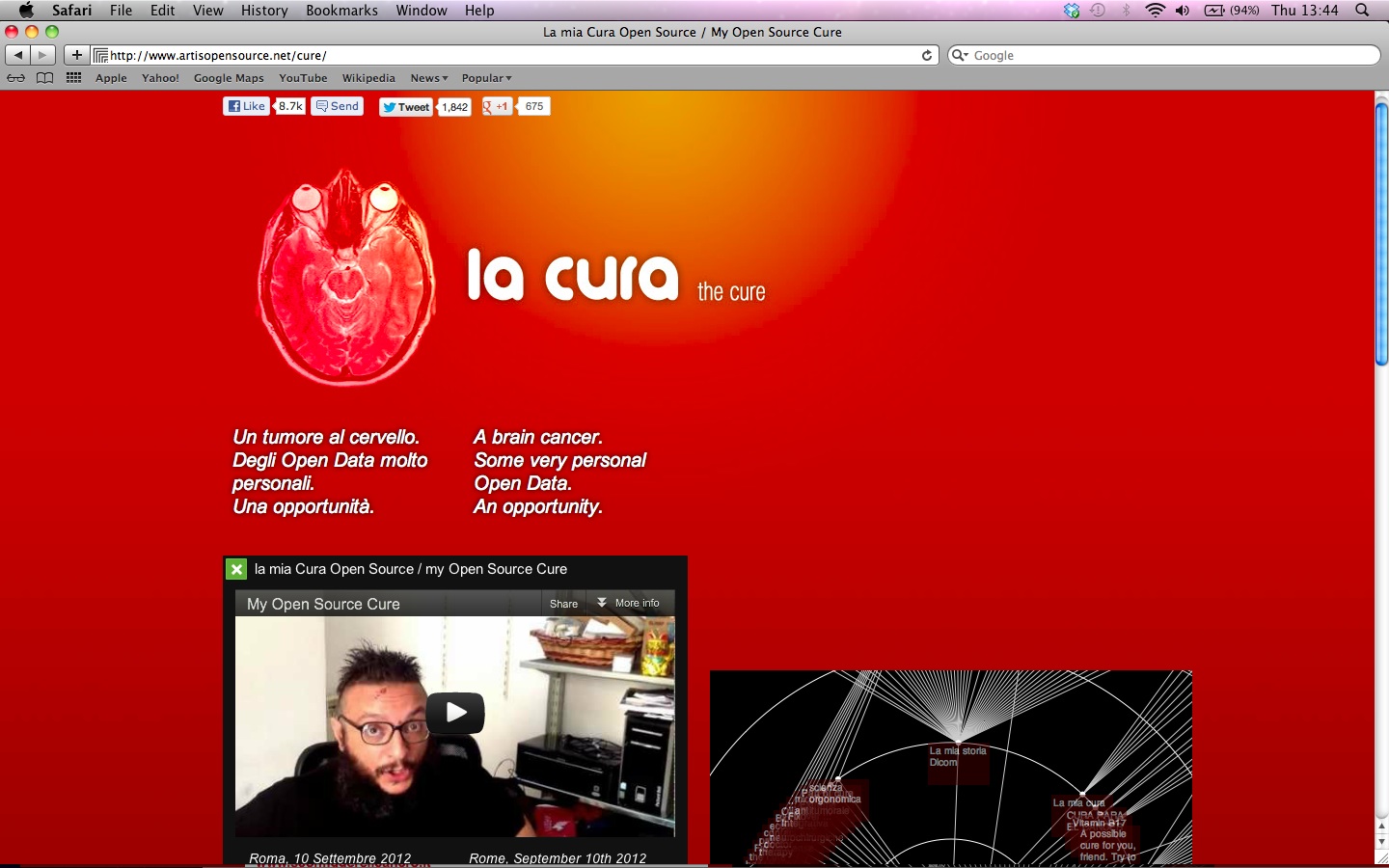Bear with me. This could be a long one.
Or, for the shorter version, here we’re hoping to explore the idea of sharing ‘stuff’ about your brain tumour and related experiences on THE INTERNET. There will be good things. And bad things. And ultimately it’s down to you to decide.
Now, the long version…
 A wee while back we got an excited email flying round the team here at brainstrust. It was from Meg. She sends a lot of excited emails, so it was a little while before I got to it, and by ‘eck, I’m glad I did. Meg’s note contained a link to a blog titled ‘Boyfriend with a Brain Tumour’ by Jill Osborne, and it turned out to be one of the most sensitive, yet entertaining and upbeat blogs about living with a brain tumour that I’d seen. And it was from the carer’s perspective, which in itself is a little more unusual. You should totally have a read, click here: http://boyfriendwithabraintumour.wordpress.com/
A wee while back we got an excited email flying round the team here at brainstrust. It was from Meg. She sends a lot of excited emails, so it was a little while before I got to it, and by ‘eck, I’m glad I did. Meg’s note contained a link to a blog titled ‘Boyfriend with a Brain Tumour’ by Jill Osborne, and it turned out to be one of the most sensitive, yet entertaining and upbeat blogs about living with a brain tumour that I’d seen. And it was from the carer’s perspective, which in itself is a little more unusual. You should totally have a read, click here: http://boyfriendwithabraintumour.wordpress.com/
We got in touch with Jill, first to offer her any help we could, and recently, to find out a bit more about the thinking behind her blog. It turns out she started the blog initially as a means of communication. When Bernd (the boyfriend with the brain tumour) first had a seizure and was hospitalised Jill found herself “facing the daunting task of having to update his family, my family, and our friends about what was going on.”
From our own experience, this involves a LOT of phone calls, repetition and facing questions that make you feel like you’re being put on the spot. This is all time when you could be supporting the peron that needs you the most. Jill echoes this,
“Not only did this involve a plethora of phone calls and emails, but I had to create different versions with varying levels of detail, according to the recipient. Full detail for family, a slightly abbreviated version for close friends, a summary for friends we know less well, etc. It was exhausting, especially considering everything else we had to deal with at the time. I also had no hope of updating Bernd’s friends in Germany that I had never met or spoken to before.”
Getting the approach right
We continue to be blown away by Jill’s upbeat approach, her ability to make light of their situation and her sense of humour which is very reflective and considered. A difficult balance to achieve, but one that can negate any feeling of irreverance that may otherwise be created. Jill continues,
“I thought long and hard about the blog first, as I did not want it to be wall-to-wall misery, and I did not want to infringe on Bernd’s privacy (as he is quite a private person). After discussing it with him, he assured me that he did not mind, and I went ahead.”
This consideration and consultation with those that you’re blogging about is clearly an essential step in creating a useful online presence for those interested in your journey. But what about those times when it’s difficult to be upbeat, and you need a dialogue, or when you need that conversation, as a carer, to help counter any feelings of isolation or distress?
Phone a friend
Well Jill states that she continues to update family via phone and email, adding that “they are not spared the wall-to-wall misery”. She continues, “I no longer needed to individually inform everyone else about the latest developments. A massive weight had been lifted. Bernd and I pointed our friends at the blog and I posted a link on Facebook. After that, I reasoned that anyone who wanted to be updated on our situation could read the blog, and anyone who wasn’t interested was no longer inundated with information about it against their will.
And what do friends and family make of this? Are they happy to be updated in this way? We wondered if they felt involved enough in Bernd’s care and wellbeing. Jill is quick to add that she received many emails and posts from Bernd’s friends, including those in Germany, thanking her for writing the blog and keeping them informed. She continues with a further, salient point, “After Bernd’s brain surgery he could not speak articulately for quite some time, so was unable to verbally update even his immediate family. The blog really came into its own during this time, as I was often too stressed and distraught for phone calls, but could handle the more solitary activity of penning a short internet update.”
And if things change?
But what else? We know things can change over time. People with a brain tumour can get better, and go back to work. Or they can become more poorly. We asked Jill about her plans for the blog over the coming months, and whether it had developed into more, or less of what she’d planned for.
“As time went on, the blog remained an essential communication tool but also developed other purposes. It became an outlet for my thoughts, feelings and daily random musings. I have tried to keep it relatively light. Even in our situation, the daily absurdities of life still resonate with others. We do have our dark moments but overall we are positive people, and I think the blog has helped to communicate that and allay the fears of people who know us – who would perhaps otherwise worry about our outlook and mindset.
Bernd is currently undergoing his initial treatment and his condition is stable. The only thing that concerns me about the blog is its future. When his condition deteriorates, will I still be able to keep it as light and entertaining? It seems doubtful. I decided I will cross that bridge when I come to it. At the moment, and ideally for years to come, I hope it will remain useful for me and informative for people close to us, and even some strangers who stumble across it on the internet.”
And how can a blog help others? Well that’s a tough one. We know that sharing experiences and seeing what others are going through can help you feel less isolated when you’re battling a brain tumour. And writing a story is often a cathartic exercise, even if you decide not to share it. Jill’s repsonse on the subject is unsurprisingly thoughtful and considered,
“I am mindful of the fact that there are others in the same situation as me, having to deal with the sudden and unexpected diagnosis of a partner’s serious illness. If my story can provide information, the sense of not being alone, and perhaps a moment of light relief for people going through something similar, that is another added bonus of writing the blog.’
A compelling case for blogging
So I think we’ve a compelling case for blogging about brain tumours. nformative updates, shared with the right people can be a fantastic thing. Blogging can be a really useful tool for communicating with friends and family, and it can considerably reduce the burden of making endless phone calls, increasing the time you have to look after yourself and those that really need you. But don’t forget the general public, and indeed anyone else lurking around the internet can have peep too. Also remember your blog is no substitute for a chat, or a hug. That’s the important bit.
Some things to consider if you decide to set up your own brain tumour blog
So whether you think a blog is a good idea, or not so great, is a decision only you can make. We think it’s a good thing if it’s done in the right way, but acknowledge that everyone is different. Should you wish to join the world’s bloggers and start sharing your brain tumour journey, we do have some little tips:
1) Think about what you want to achieve? Why are you blogging? Who will it help?
2) Consider your approach and consult with those who you will be blogging about. Ask them what they think about it? Remember the internet is open to everyone, 7 days a week 365 days a year. Some people will be comfortable with this, others not so.
3) What might your blog look like in a years time? Can you keep it going? You may feel that you have enough to worry about without having the added burden of logging on posting an update.
4) Sometimes there is no substitute for a conversation. It’s very easy to become embroiled and involved in the online side of things that you actually create more distance between you and those that you want to share your story with. A chat is good excuse for a trip out or a useful break.
5) Jill’s blog is developed using WordPress – wordpress.com. WordPress is great, but it’s not the only option. There’s nothing to stop you using facebook, twitter or google’s tools to start sharing your story.
And now for something really challenging… crowd sourcing a brain tumour cure

Ok, so we’ve talked about blogging… but as we seem to have developed a reputation (in clinical circles anyway) for pushing boundaries and challenging the norm, how about this: An open source cure for brain cancer. Salvatore Iaconesi is a TED fellow and brain tumour patient who has thrown his medical information open to the public in a bid to find a solution to his problem. Check out his website here, and video, here on youtube: http://youtu.be/5ESWiBYdiN0
What do you think?
We’d love to know your thoughts on all this. Got a good blog? Know of a great story where someone has benefitted from sharing their journey? Or simply want to find out more? Let us know what you think over on facebook.com/brainstrust. If you want help setting up a blog, why not give us a tinkle on 01983 292405, or email will@brainstrust.org.uk







